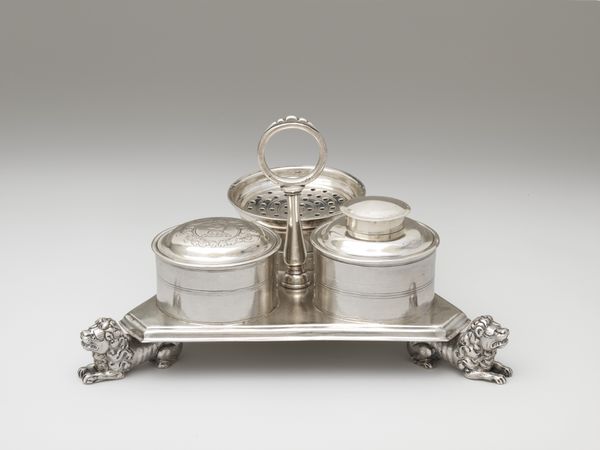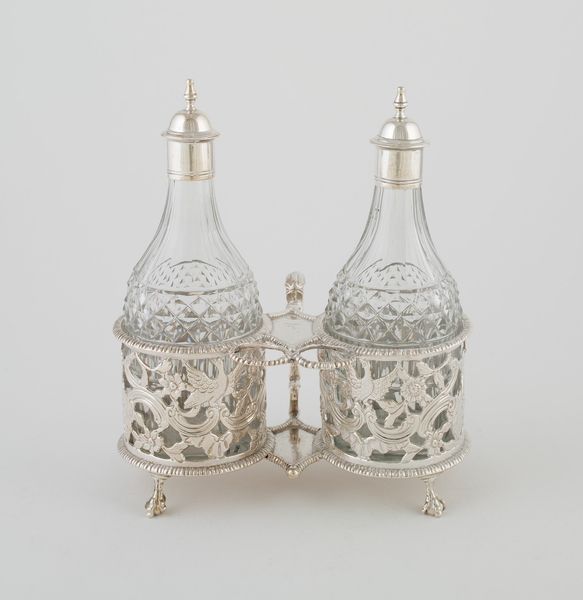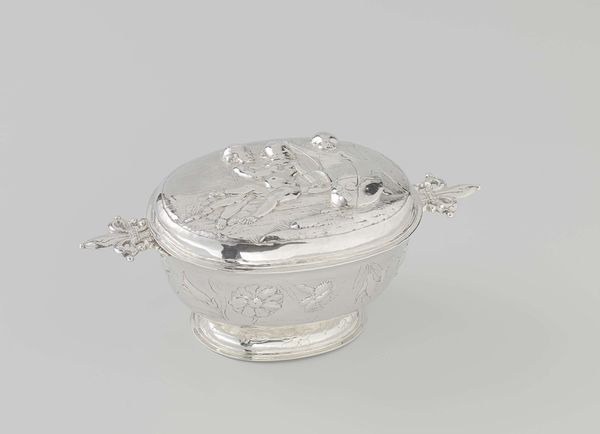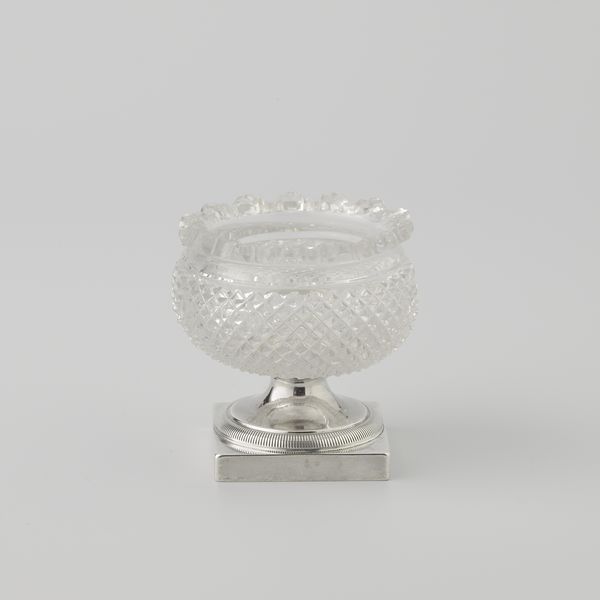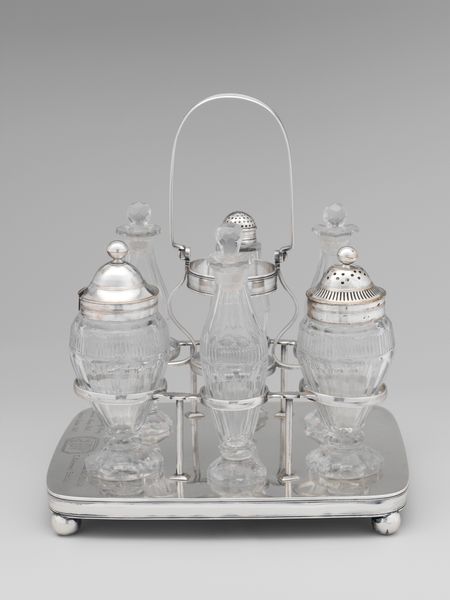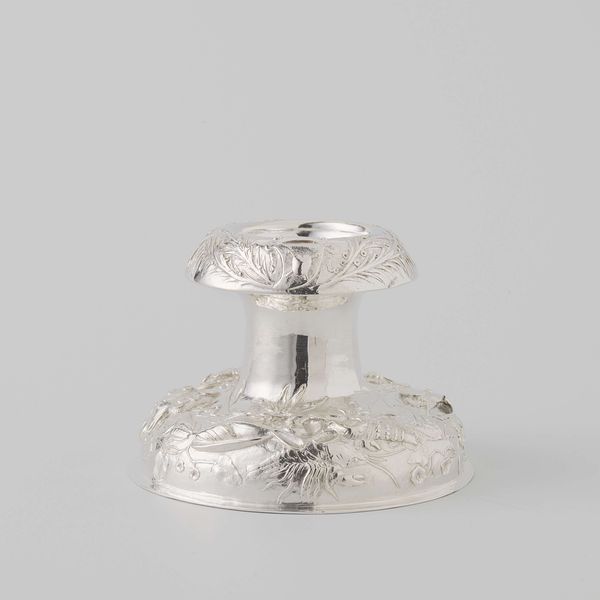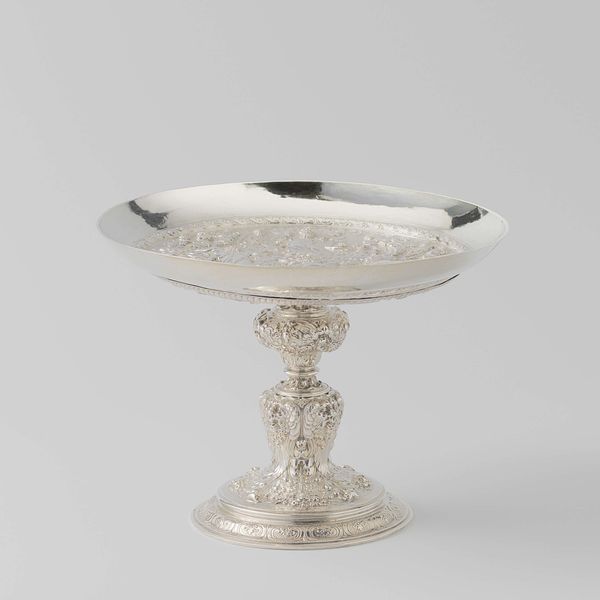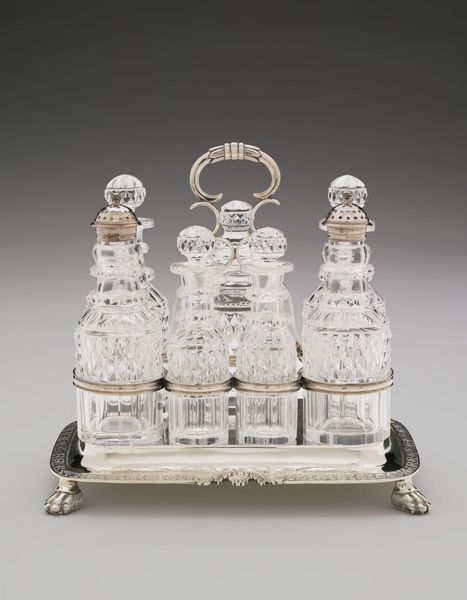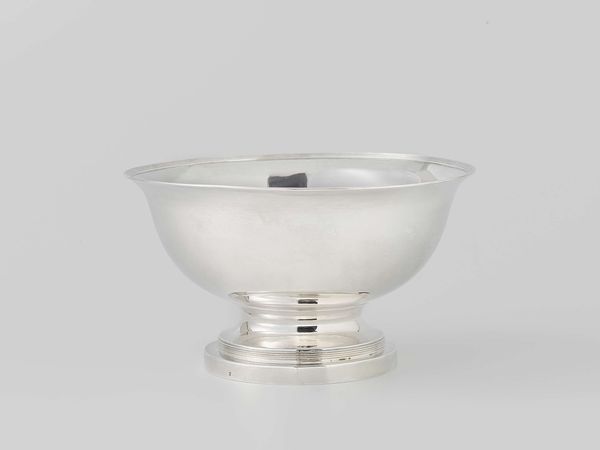
Inktstel, afgerond rechthoekig, met drie glazen potten 1824
0:00
0:00
theodorusgerardusbentvelt
Rijksmuseum
silver, metal, glass
#
neoclacissism
#
silver
#
metal
#
glass
#
decorative-art
Dimensions: height 9.2 cm, width 22.1 cm, depth 12.9 cm, weight 401 gr
Copyright: Rijks Museum: Open Domain
Curator: Look at this "Inktstel, afgerond rechthoekig, met drie glazen potten," an inkstand made in 1824, crafted from silver and glass and located at the Rijksmuseum. Editor: What a striking piece. The symmetry is so carefully balanced – it's almost austere, wouldn't you say? There is such elegance and fine execution in this simple, clear form. Curator: Indeed. The neo-classical influence is quite apparent. Think of the era: This wasn't merely about function, but signaling refinement, class, and the accessibility of knowledge to privileged European men. Who were the users, the authors of history, the powerful and influential? How was this inkstand implicated in the narratives and political machinations of the period? Editor: Certainly, but let’s consider the materiality, the interplay between light and shadow on the glass, the cool sheen of the silver. It's all quite precise. Observe the geometrical shapes, the proportions, the relationships between the rectangular base and the cylindrical bottles. The contrast is perfectly measured. It creates this harmonious and very precise effect that appeals to reason rather than emotion. Curator: Precisely – and this precision underscores a sense of control, not just aesthetically, but also intellectually and politically. These objects reflected the dominance and authority tied to literacy and document creation in a period defined by burgeoning imperialism. The control afforded to them. Editor: A semiotic analysis could expose the latent symbolic order in each element. For example, silver connoting wealth and status; the crystal cut patterns representing refinement; and glass as fragile, containing possibilities, waiting to be actualized by ink, for them. It almost encapsulates that moment of possibility and creation. Curator: And let's not forget the global implications of accessing and documenting these histories; of defining the power of who could author and who was authorized. Who was deemed suitable to write and benefit from what was recorded with that ink. Editor: Looking closely makes me reflect on how seemingly mundane objects can carry entire philosophies in their visual language. Curator: Ultimately, this little piece encourages critical thought around materiality and how they reflected 19th-century powers at play in both public and private sectors.
Comments
No comments
Be the first to comment and join the conversation on the ultimate creative platform.

